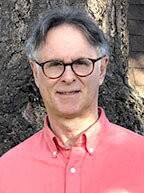In What Setting is Lung Cancer Screening Most Effective?
The National Lung Screening Trial (NLST), the largest randomized lung screening trial ever conducted, showed a substantial benefit for heavy smokers aged 55-74 who were screened for lung cancer using low-dose computed tomography (LDCT) scans. CT screening identified more lung cancers at earlier stages resulting in a significant decrease (20 percent ) in lung cancer mortality in the screened group. For decades, the vast majority of lung cancers were diagnosed in symptomatic patients with advanced and incurable disease. The NLST findings were thus historic -- in the words of Douglas E. Wood, M.D., a Professor of Surgery at the University of Washington, “world changing” and “the biggest news in a generation” for lung cancer patients.
Benefits and Risks
While the benefits of the lung cancer screening are clear, there are also attendant risks and potential harms, most notably subjecting patients to invasive procedures who are later determined to have benign disease, procedures that can also result in complications, and in rare instances, death.
How then can we realize on the promise of lung cancer screening while minimizing its risks? This is the question that a distinguished group of lung cancer specialists addressed in a paper recently published in The Journal of the American Medical Association (JAMA).
Disparities in Screening Programs
In their systematic review, the authors first analyzed data from the NLST and numerous other lung cancer screening trials. They noted CT-screened patients in the NLST had the best data, and that sites in the NLST were predominantly located at large academic medical centers or dedicated cancer centers .
From the data, it was found that positive results occurred in approximately 20 percent of patients per round of screening. Although 90 percent of these lesions turned out to be benign, patients still needed careful evaluation and follow-up, and, in some cases, a full clinical workup, invasive exploratory procedures, or surgery to remove a lung tumor.
The authors noted with concern that there were large disparities in the quality of follow-up investigations, frequency of biopsies, and percentage of (unnecessary) surgical procedures performed in patients with benign lesions in the programs they looked at. They attributed this to lack of experience and inadequate quality control in underperforming programs.
The Optimal Setting for Lung Cancer Screening
As a result, the authors recommended that screening take place only in the setting of a large academic medical center such as the UCSF Lung Cancer Screening Program where specialized thoracic (chest) radiologists have been rigorously trained in screening algorithms that distinguish between malignant and non-malignant lesions, and where extensive quality controls ensure consistent interpretation of images and descriptions of LDCT findings. These centers also have board-certified thoracic surgeons on staff who perform complex lung cancer surgeries and diagnostic procedures in high volume. Numerous published studies have demonstrated that lung cancer patients have far fewer complications and better outcomes when undergoing surgery at such centers.
Key Recommendation
The paper concluded with several recommendations jointly endorsed by the American College of Chest Physicians (ACCP) and the American Society of Clinical Oncology (ASCO), stating unqualifiedly:
“Screening should be conducted in a center similar to those where the NLST was conducted, with multidisciplinary coordinated care and a comprehensive process for screening, image interpretation, management of findings, and evaluation and treatment of potential cancers.”
A Long-term Relationship
Patients should be aware that lung cancer screening is not a onetime event, but more likely the start of a long-term relationship between the patient and an ecosystem of specialists including pulmonologists, thoracic radiologists and thoracic surgeons. Patients should ensure that the program they choose has a clinical team with the skill and expertise required to make what may prove to be a challenging and complex diagnosis.

